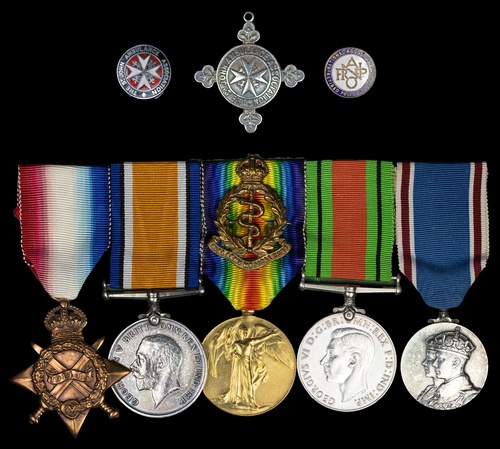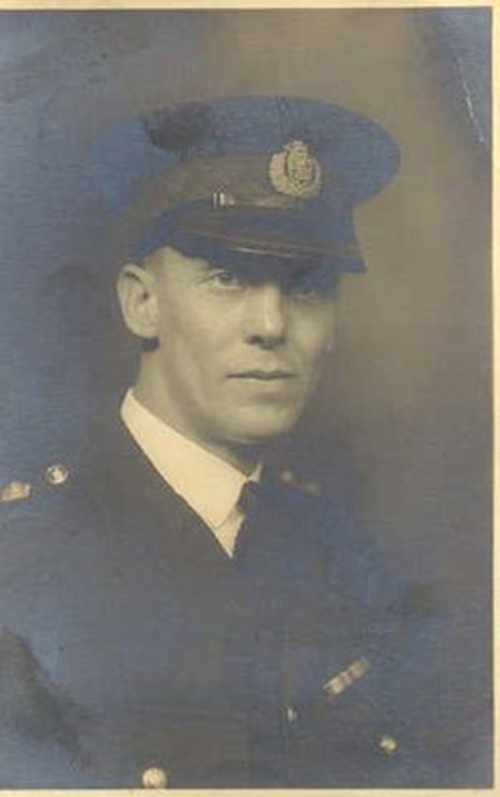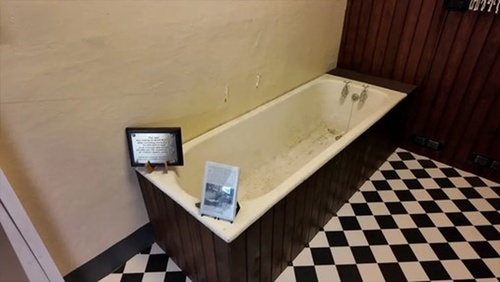Auction: 25111 - Orders, Decorations and Medals - e-Auction
Lot: 480
The campaign group of five awarded to Sergeant G. E. Walker, Royal Army Medical Corps who went on to become Chief Inspector of Lancaster City Police
He was involved in the prosecution of the infamous Doctor Buck Ruxton in 1936 in what became known as the "Jigsaw Murders" because of the painstaking efforts to re-assemble, identify the victims, and determine the place of their murder, This pioneering forensic work become an integral part of modern policing
1914-15 Star (56186 Sjt. G.E. Walker. R.A.M.C.); British War and Victory Medals (56186 Sjt. G.E. Walker. R.A.M.C.); Defence Medal 1939-45; Coronation 1937, unnamed as issued, sold together with an RAMC cap badge, very fine (5)
George Ernest Walker was born at Lancaster on 5 June 1895, the son of Brown Walker. He was a police constable with Kendal Borough police force when war was declared and enlisted in the Royal Army Medical Corps on 17 February 1915.He served from 7 September 1915 until 18 August 1919 when he was discharged.
After the war he joined Lancaster City Police; promoted Sergeant in 1928, Inspector in 1933 and Chief Inspector in 1940, he was for a while Deputy Chief Constable in 1940. During his long association with the force he frequently appeared as prosector at the magistrate's court and undertook a significant amount of work in the prosecution of 'Buck Ruxton' in 1936. He retired from Lancaster City police after a long and successful police career in 1946.
The heinous crimes of Doctor Buck Ruxton and ground breaking forensics
Buck Ruxton was a Lancashire GP who murdered his wife and their maid before dismembering the womens' bodies in a bath tub and dumping their remains in a ravine more than 100 miles away.
Following a huge search, more than 80 body parts, including two severed heads, were found each neatly bundled up in newspapers, wrapping paper and sheets, and scattered. Teeth and fingertips had been removed to prevent identification.
Pivotal to the prosecution's case were ground-breaking advances in forensic science which linked him to his victims' remains, which were found dumped beneath a bridge over a stream in Moffatt, Dumfriesshire, in September 1935. This pioneering forensic work become an integral part of modern policing.
Jurors only needed an hour to see through the doctor's lies finding him guilty of murdering Isabella Ruxton and Mary Rogerson in Lancaster. Ruxton was sentenced to death on Friday 13 March 1936 and sent to the gallows.
Unsurprisingly there is a wealth of material available online as well as several published books about the grisly murders and the extent to which forensics science, then in its infancy, helped to convict Ruxton.
Walker died in 1979; sold together with copied research and a St. John's Ambulance Association lapel badge, National Association of retired police officers lapel badge, St. John's Ambulance silver badge, engraved on the reverse 242533 George Walker. A framed and glazed photograph of an RAF officer.
Subject to 20% VAT on Buyer’s Premium. For more information please view Terms and Conditions for Buyers.
Sold for
£170
Starting price
£140











